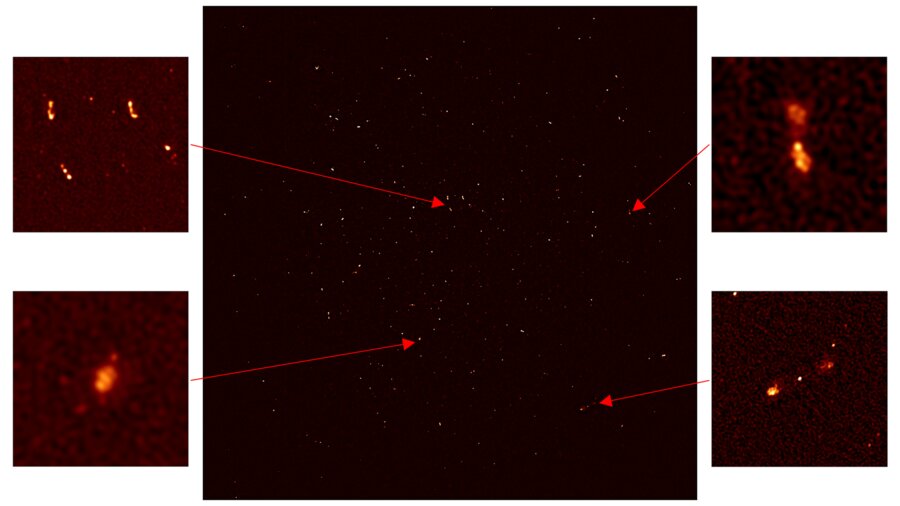How a 'MeerKAT' sniffed out 1,300 new galaxies
Loading...
Upon its first glance into deep space, the MeerKAT has already identified a bunch of distant galaxies.
South Africa’s radio telescope MeerKAT is considered an early success upon the release of its first image on Saturday. The image shows more than 1,300 galaxies in a region where only 70 had been previously identified – among them, galaxies centered around massive black holes and hydrogen-rich star factories.
“The launch of MeerKAT AR1 and its first results is a significant milestone for South Africa,” said Rob Adam, Project Director of SKA South Africa, in a statement. “Through MeerKAT, South Africa is playing a key role in the design and development of technology for the SKA.”
MeerKAT, which was funded and commissioned by the South African government, will be composed of 64 receptors once completed. So far, only 16 dishes have been completed.
The images produced by MeerKat “are far better than we could have expected”, the chief scientist of the SKA in South Africa, Fernando Camilo, said at the site of the dishes near the small town of Carnarvon, 600 kilometers north of Cape Town, The Guardian reported.
But MeerKAT is merely a precursor to a much larger project.
The Square Kilometer Array (SKA) telescope will include nearly 200 dishes in South Africa and Australia, and will integrate the MeerKAT array. SKA, which begins construction in 2018, is expected to be the world’s most powerful radio telescope, capable of detecting objects billions of light years in the distance.
“MeerKAT was designed to contribute significantly to our understanding of cosmology, the study of the structure and evolution of the entire universe in its larger scale,” Naledi Pandor, South Africa’s Science and Technology Minister, told the Cape Times. “In addition, it can help us increase our understanding of the formation and evolution of individual galaxies.”
MeerKAT and SKA have established South Africa as an international competitor in big science, but these projects may also provide significant economic opportunities. The initial MeerKAT project has already employed more than 400 people in infrastructure, fiber optics, and data collection.
“What the nuclear and space programmes did for the US and Russian economies shows how important mega-science is in a nation’s economic development,” Economic Development Minister Ebrahim Patel said in a statement.






